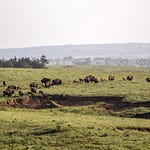Trees have fascinated me since my childhood. I remember climbing into the heights of our white pines to get frisbees—or whatever else we had thrown up there—and then wondering how they knew what to do. How do trees know how to grow? How do the oaks and maples know the right time to change their foliage to brilliant yellow, orange, and red? How aware of the surrounding world is a tree?
Have you ever noticed how often God talks about trees in the Bible? Only people, and God Himself, are mentioned more than trees. In Genesis 2, God formed Adam with His hands, and as soon as He breathed life into the first man, He planted a garden with every tree pleasing to the eye and good for food. In the middle were the tree of life and the tree of the knowledge of good and evil.
Strangely enough, the Scripture portrays trees as things that communicate. They clap their hands (Isa. 55:12), shout for joy (1 Chron. 16:33), and even argue (Judges 9:7-15). Over the last twenty years, scientists have discovered that trees count, share resources, and really do communicate with each other, using a system they call the “wood wide web.” The mycorrhizal network under our feet connects the trees in much the same way the neurons in our brains connect with each other and share information.
What a wonderful thing to realize all over again that science really does back up the truths in the Bible! Jesus Himself created trees and then, on a wooden cross, offered Himself to build a way, a bridge, for us to get back to the tree of life.
As always, may you find joy in the simple things. This is Marlin with Plain Values magazine. Learn more about our work, and subscribe, at plainvalues.com.









